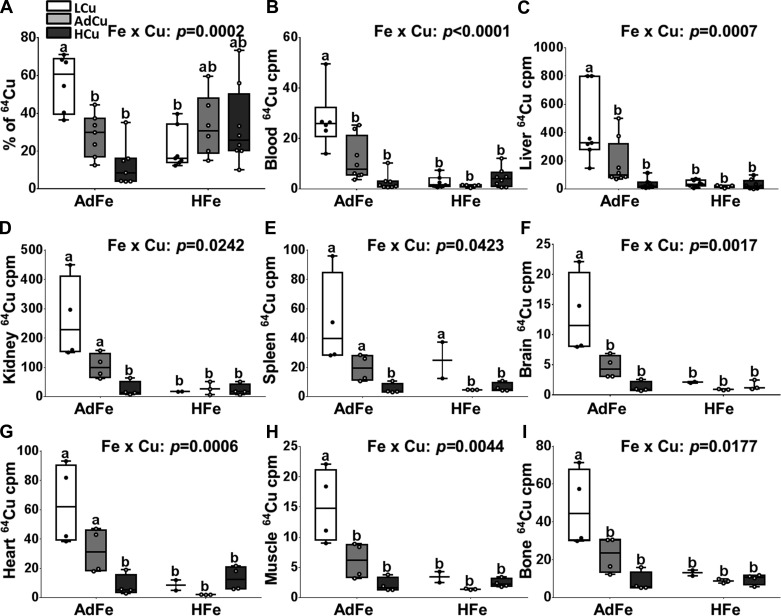Fig. 5.
High-iron consumption perturbed 64Cu absorption and tissue distribution. Weanling C57BL/6 mice were fed 1 of 6 diets varying only in iron and copper content for 5 wk ad libitum. Subsequent to the dietary regimen, copper absorption and tissue distribution were determined after oral gavage of 64Cu. 64Cu absorption (percent) (A), and distribution in blood (B), liver (C), kidney (D), spleen (E), brain (F), heart (G), muscle (tibialis anterior) (H), and bone (tibia) (I) were determined by gamma counting and values were normalized by volume (blood) or weight (tissues) of specimens. Data are presented as box plots representing 6–8 (A–C) or 2–4 (D–I) mice per group. Two-way ANOVA on ranks analysis revealed an iron main effect for 64Cu content in blood, liver, kidney, brain, heart, muscle, and bone (P < 0.0084 for all). A copper main effect was also noted in regard to 64Cu absorption and 64Cu accumulation in all tissues except heart (P < 0.0216 for all). Two-way Fe × Cu interactions were also noted for all measured parameters (as indicated in the individual panels). Since significant 2-way interactions were noted, Tukey’s multiple comparisons post hoc test was utilized to determine differences among individual groups for each parameter; labeled means without a common letter differ (P < 0.05).

